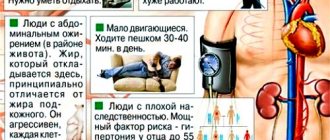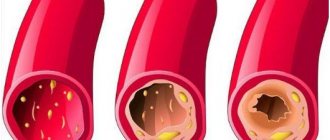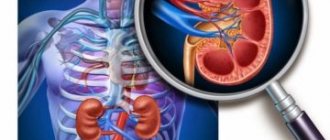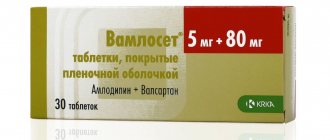Nausea is a painful sensation in the chest, epigastric region, mouth and pharynx. This condition is often confused with vomiting: but these are different concepts. Nausea often precedes vomiting. There are many reasons for this pathological phenomenon - from diet violations and food poisoning to hypertensive symptoms.
Indeed, one of the symptoms of arterial hypertension (AH) is nausea. If you are also tormented by this ailment, it means that you are not treating hypertension correctly or are completely ignoring treatment. Usually, pressure and nausea are a sign of advanced disease.
Can pressure make you feel sick?
Not all people know whether vomiting can occur due to high or low blood pressure. It definitely can, since with sudden jumps in blood pressure in the spinal cord and brain, all processes associated with blood circulation are disrupted. This leads to the fact that the vomiting department, located in the brain stem, is irritated, and severe nausea occurs. If the pressure increases very strongly, then in addition to this symptom, others develop - ringing in the ears, headache and dizziness.
Most often, vomiting occurs in people who have suffered from hypertension for several years. However, hypotensive patients also experience this symptom. If low blood pressure is not normalized in a timely manner, a person may experience fainting, weakness, and problems with the gastrointestinal tract. If the above symptoms occur, it is better to visit a doctor to determine your blood pressure level and prescribe effective treatment.
What to do when you have nausea at low blood pressure
Cause
Nausea with low blood pressure is one of the signs of this disease. Against the background of nausea, there is a loss of strength, the pulse quickens, the patient suddenly sweats, he begins to drool, an involuntary swallowing movement occurs, and vomiting may begin.
The disease is divided into primary and secondary hypotension. The first is characterized by an acute course and occurs unexpectedly. Secondary - chronic.
Mostly women suffer from this problem.
2. The causes of secondary hypotension are explained by the presence of one of the following diseases:
- traumatic brain injury;
- cardiovascular diseases;
- inflammatory processes in the thyroid gland;
- gastrointestinal ulcer;
- a number of chronic diseases.
Why do you feel nauseous when your blood pressure is low?
1. Low blood pressure and nausea occur in the following situations:
The compensatory reaction of the human body to these situations is expressed by nausea, weakness, and rapid pulse. These symptoms go away very quickly.
3. For a person who constantly suffers from low blood pressure, headaches are usually long-lasting, pulsating or migraine-like in nature with nausea and vomiting due to circulatory disorders in the vessels of the brain of the head.
What to do if you have low blood pressure and nausea? It is necessary to help the person as quickly as possible, otherwise loss of consciousness is possible.
1. To do this, lay the patient down with his legs higher than his head. In cases where it is not possible to assume a horizontal position, the patient must be seated, with his head lowered between his legs.
2. Give the patient sweet hot tea.
3. In 15 minutes, you can normalize the pressure by massaging the hole located above the upper lip.
4. To raise blood pressure, the patient needs to get a good night's sleep, it is advisable to sleep not only at night, but also during the day.
5. Good high-calorie food, a walk, and physical therapy will have a positive effect on the patient’s well-being.
6. The medications that the doctor should prescribe should be based on Caffeine, Dopamine, Ergotamine, Dihydroergotamine. Here are examples of the most popular medications:
7. If a person has low blood pressure and feels sick, then there are a number of medications that have an antiemetic effect and are based on domperidone, metoclopamide, and ondansetron. Here are examples of the most popular medications:
8. To provide a tonic effect, drugs from the group of adaptogens have proven themselves well.
If the measures taken do not relieve vomiting, nausea and low blood pressure, you must undergo a full examination at a medical facility.
Preventive measures
To prevent hypotension and all its consequences, you must:
to live an active lifestyle; stop drinking alcohol, don’t smoke; take daily walks in the fresh air; pay attention to your diet; eliminate stressful situations from life.
A person experiences a feeling of nausea with low blood pressure; these two conditions are related to each other. Prevention of this disease is not difficult. If its signs appear, you should contact a medical institution for help from a specialist.
Research
The Research Institute of Cardiovascular Diseases conducted research on the properties of a well-known drug for hypertension.
As a result of a 30-day study of a group of volunteers of 82 people suffering from hypertension, the following results were obtained:
- All volunteers experienced complete disappearance of headaches
- From the first appointment, the blood pressure normalized.
- A general improvement in well-being was noted, weakness and chronic fatigue disappeared.
- All subjects noted improved sleep, and insomnia disappeared.
- Anna on How to take a blood test for cholesterol correctly
- Alina on the post Symptoms of the acute stage of VSD in adults
- Evgenia on A set of exercise therapy exercises after myocardial infarction
- Elina on Treatment of varicose veins of the lower extremities with leeches
- Olga on the post What does a strong increase in AT TPO hormones in the blood mean?
The information posted on the portal is not a guide to self-medication and does NOT replace consultation with a doctor! The Site may contain content that is not intended for persons under 16 years of age.
At what pressure does nausea occur?
When does nausea occur? This symptom can occur with both high and low blood pressure. It is recommended to familiarize yourself with the features of the appearance of vomiting at different blood pressure levels.
High
Vomiting often appears as a complication of hypertension. It occurs against the background of impaired blood circulation in the brain tissue and irritation of the vomiting department.
However, some experts also name other causes of nausea with high blood pressure. A sharp deterioration in blood circulation provokes the accumulation in the body of a component such as adrenaline. Due to large amounts of this substance, people develop anxiety, fear and panic attacks. Over time, because of this, in patients with hypertension, the tone in the nervous system increases and nausea appears, accompanied by vomiting.
Low
Vomiting is rare in patients with hypotension. It appears due to exhaustion, fatigue or general weakness of the body, which is caused by low blood pressure. To quickly get rid of nausea and other manifestations of hypotension, you must immediately raise your blood pressure. To do this, you should use vasodilator drugs that can quickly improve blood circulation.
Why does blood pressure decrease?
Attention! The main cause of nausea during hypotension is swelling in the brain tissue, when there is excessive pressure on the receptors and provocation of the gag reflex. The deviation cannot be neglected, because against such a background life-threatening conditions for the patient may appear
Blood pressure readings may be reduced as a result of the following factors. The reasons may be as follows:
The deviation cannot be neglected, because against such a background life-threatening conditions for the patient may appear. Blood pressure readings may be reduced as a result of the following factors. The reasons may be as follows:
- with vegetative-vascular dystonia as a result of excessive vasoconstriction;
- when the arteries of the brain are damaged by cholesterol deposits (atherosclerosis);
- decreased blood volume as a result of serious blood loss (injuries, wounds, internal bleeding, loss of fluid in the body, heavy and prolonged menstrual bleeding in women);
- diseases of the heart and blood vessels;
- constant fluctuations in the concentration of hormones in the human body;
- serious changes in the functioning of the endocrine system;
- anemia;
- oncological diseases;
- pulmonary artery blockage;
- states of shock;
- long-term use of antihypertensive drugs in irregular doses.
External factors can affect blood pressure fluctuations:
- long stay in hot countries;
- professional participation in heavy sports;
- work in difficult conditions;
- intense physical activity.
Hypotension is not classified as a separate disease of the cardiovascular system and its danger is often overlooked. With low blood pressure, the patient may feel significant discomfort: it is constantly accompanied by dizziness, which in critical situations can result in fainting and hypotensive crisis.
Regardless of the provoking factors, a condition that causes anxiety always requires medication correction, and timely consultation with a doctor is the key to recovery.
Associated symptoms
In order to promptly determine the presence of complications caused by unstable blood pressure, it is necessary to become familiar with the first signs of nausea and its accompanying symptoms.
The child has
Children, like adults, are often subject to sudden changes in blood pressure, which can make them feel worse. Children's bodies are much weaker than those of adults, and therefore they tolerate hypotension or hypertension less well. With such diseases, in some children, the central and peripheral parts of the vestibular apparatus are affected, which leads to nausea. This symptom is accompanied by a number of other signs, which include:
- vomiting;
- increased sweat production;
- general weakness;
- hearing problems.
If your baby exhibits the above symptoms, you should immediately visit a doctor.
In an adult
Adults feel nauseous due to frequent fluctuations in blood pressure during the day. This leads to poor balance, poor hearing and dark circles under the eyes. However, there are other symptoms that appear in people under 50:
- dizziness;
- sense of anxiety;
- depression;
- weakness;
- apathy;
- panic attacks;
- stomach ache.
In addition to the symptoms described, some patients begin to experience severe headaches. In this case, it is better to immediately take painkillers.
In an elderly person
In elderly people, nausea and vomiting with high blood pressure is difficult to tolerate. In addition to gagging, patients experience the following symptoms:
- lethargy;
- impaired coordination of movements;
- headache, in which the headache is worse in the evening than in the morning;
- blurred vision.
Causes of violation: who is at risk
Vomiting with high blood pressure can occur suddenly, including in a person who has never complained of a similar condition before. The thing is that hypertension can be asymptomatic for a long time, without manifesting itself in any way. Stress, alcohol abuse, etc. can provoke a sharp jump in blood pressure followed by vomiting.
GB itself develops against the background of:
- sedentary lifestyle;
- poor nutrition;
- overweight, obesity;
- nicotine and alcohol addiction;
- pathologies of internal organs.
At risk are people whose age is over 35-45 years (depending on gender). Blood pressure can rise after physical overexertion, especially in hot weather, eating spicy and fatty foods, or lack of sleep. Withdrawal of medications prescribed for hypertension can also result in increased blood pressure followed by vomiting.
If a violation occurs, it is important to urgently call an ambulance. On your own at home, you need to take the remedy recommended by a specialist and lie down on the sofa, always on your side, so as not to choke on vomit.
Causes
It is recommended to understand in advance why vomiting occurs in people with unstable blood pressure. This will help you get rid of this unpleasant symptom faster. To identify the exact cause of nausea due to arterial hypertension, you should undergo a full medical examination, which includes regular blood pressure measurements and additional laboratory tests.
If vomiting during a hypertensive attack is accompanied by an unsteady gait, dizziness and weakness in the limbs, then this indicates chronic fatigue. In this case, the patient needs a good rest, which will help relieve fatigue more quickly. However, there are more serious diseases that provoke nausea with an increase in blood pressure:
- impaired blood circulation in brain tissue;
- heart diseases;
- inflammatory processes in the body;
- impaired functioning of the nervous system;
- diabetes.
The most serious factor provoking vomiting during blood pressure surges is considered to be cardiovascular diseases. They provoke the development of serious complications that significantly complicate the treatment of pathology in the future.
How to eliminate the symptom at home
Vomiting when blood pressure rises is just a symptom. It can be eliminated only by removing the cause, that is, by stabilizing blood pressure. This can be done at home, using medications such as:
- antihypertensive drugs;
- vasodilators;
- diuretics.
Often, several types of medications are used simultaneously to quickly stabilize blood pressure and prevent the occurrence of side effects of medications. You can relieve nausea and vomiting using one of the folk remedies, for example, eating mint candy.
With a strong increase in blood pressure, pills and traditional therapy will be useless. Here it is important to deliver the victim to the hospital in time and administer fast-acting drugs intramuscularly or intravenously. At home, before the ambulance arrives, you need to give the patient Valerian or a few drops of Corvalol , which will help calm the nervous system.
In the hospital, the person will be given a drip of Magnesia or another drug that will help quickly stabilize blood pressure, thereby eliminating painful symptoms. Subsequently, after undergoing a comprehensive examination, the patient will receive complex therapy aimed at eliminating the consequences of the attack and preventing its occurrence in the future.
If there was a stroke or heart attack during the attack, rehabilitation may be prescribed, which will include physical therapy, acupuncture and other procedures that will help the patient return to normal life.
What to do if you have a sudden attack of nausea
If nausea with severe vomiting suddenly appears, you must call an ambulance so that doctors can quickly restore normal well-being. However, before their arrival, you will have to take measures to reduce nausea.
It is recommended to use special relaxation techniques. They will help you calm down and take your mind off the feeling of discomfort. Relaxation methods include the following:
- Autogenic relaxation. The most common and effective is the autogenic technique, which is aimed at diverting attention from nausea. When performing the exercise, you need to completely relax the muscles of the body, breathe deeply and think about something peaceful. To reduce unpleasant nausea, you need to carry out the procedure for at least ten minutes.
- Visualization. This method helps people with a good imagination. When using visualization techniques, the patient must relax, imagine a calm place and completely immerse himself in it. The procedure is performed in a sitting position with eyes closed.
Treatment
Some people do not know what to do to quickly get rid of nausea caused by pressure surges. Experts advise hypertensive patients to change their diet to prevent vomiting. However, this is not enough to get rid of such an unpleasant symptom.
Medicines
Drug treatment is aimed at stabilizing blood pressure in patients. To do this, it is recommended to use a product such as Cordiamine. Before starting treatment with this drug, you need to familiarize yourself with its contraindications. It should not be used by girls at any stage of pregnancy, epileptics and children under ten years of age. Everyone else can take 20-25 drops of the medicine daily.
Citramon, which dilates blood vessels and improves blood circulation, can also normalize blood pressure. For five days you need to take one tablet per day. If your health has not improved during this time, you will have to take the medications for 2-3 days longer.
Acupressure
To lower high blood pressure, doctors advise periodically performing acupressure massage.
First, the area located 4-5 cm below the kneecap is massaged. Here the skin is gently massaged with your thumb for about 5-10 minutes. The procedure is then carried out around the metatarsal bones and the inside of the ankle. The massage is carried out carefully, without strong pressure with your fingers. For people who have never done massage before, it is better to contact a specialist who will do this work better.
Folk remedies
Traditional medicine helps to quickly get rid of all the symptoms of high and low blood pressure. Effective traditional medicines include:
- Garlic with milk. A mixture prepared from these products helps to quickly get rid of the signs of high blood pressure. To prepare the medicine, add two heads of grated garlic to 300 ml of milk. All ingredients are mixed, after which the mixture is drunk twice a day.
- Ginger. A healthy tea is prepared from the root of the plant, which can normalize blood pressure. To prepare a medicinal mixture, add ginger root to half a liter of warm water and infuse the liquid for two hours.
How to help yourself
A sudden rise in blood pressure can occur when there are no close people nearby, much less specialists capable of providing first aid. In this case, doctors advise, before the ambulance team arrives, to take consistent actions that will help make you feel better:
- It is necessary to measure blood pressure using a tonometer and make sure that it is elevated, and not vice versa. This is important because hypotension can also be accompanied by vomiting, and treatment for it must be completely different.
- It is recommended to lie on the sofa with a pillow or bolster under your back.
- All physical work should be postponed, even if it gets a little better. This can only make the situation worse.
- After consultation with a specialist, you need to take a medicine that lowers blood pressure.
- If you have a severe headache, it is recommended to take one of the diuretics that was previously prescribed by a specialist after diagnosing hypertension.
- As blood pressure rises, your heart may begin to hurt. In this case, it is recommended to take Nitroglycerin.
In the process of self-treatment, it is important to remember that the pressure should be reduced very carefully so as not to provoke a deterioration in the general condition. In the future, after stabilization of blood pressure, you should visit a doctor and get recommendations for further treatment. It may be necessary to replace previously prescribed medications and adjust your lifestyle, including nutrition.
It is imperative that a patient with hypertension needs to monitor his or her well-being, live a measured, calm life, avoiding stressful situations. It is important to normalize your sleep and rest schedule, devoting at least 7-9 hours to sleep. There should be no bad habits for hypertension and its prevention.
Prevention
To prevent nausea during blood pressure surges, it is recommended that you familiarize yourself with the rules for preventing pathology. To do this, you should adhere to the following recommendations:
- Stop smoking. Regular smoking negatively affects the stability of blood pressure and therefore you should give up tobacco products.
- Proper nutrition. Often, due to an incorrectly formulated diet, symptoms of hypotension or hypertension develop. It is necessary to eat in such a way that the body mass index does not exceed 20 kg/m2.
- Refusal of alcohol. Alcoholic drinks negatively affect the condition of blood vessels and therefore it is better to avoid drinking them.
Who is at risk for the disease?
Primary hypertension can appear unnoticed, and a person pays attention to this fact when he feels nauseous or other signs appear. Many people understand the need to treat this disease when it is already in an advanced state.
Among the reasons that may influence the development of hypertension are:
- hereditary factors;
- presence of intracranial pressure;
- unhealthy lifestyle (frequent drinking, smoking);
- poor diet (eating large amounts of salty and fatty foods);
- overweight or obesity;
- sedentary lifestyle (sedentary work, lack of walking);
- frequent stressful situations;
- gestosis is a complication of late pregnancy;
- menopause in women (pressure surges, intermittent periods);
- taking certain medications;
- disorders of the thyroid gland, kidneys, magnesium deficiency.
Nausea from pressure
For people whose blood pressure often fluctuates, nausea is an inevitable sign that their condition will soon worsen. Nausea from pressure can appear suddenly and it is not always possible to cope with it using ordinary means at hand. Only stabilization of the condition helps to avoid worsening of both symptoms and pressure. But, in some cases, it is no longer possible to do without calling an ambulance.
At what pressure does one feel sick?
Many people are tormented by the question: “At what pressure does one feel sick?” After all, as soon as you receive the necessary information, you immediately want to take decisive action. Unfortunately, I feel sick from both low and high blood pressure. The reasons leading to this condition are different. And if the patient knows what he is more predisposed to, then he is simply obliged to take measures to alleviate his well-being. Otherwise, it cannot be avoided without calling an ambulance.
Nausea with low blood pressure
The reasons for nausea with low blood pressure can be all sorts of ailments:
- motion sickness;
- hypotension;
- overwork;
- congenital pathologies;
- overexcitement;
- exhaustion.
Regardless of which of the above reasons caused the appearance of this condition, it is necessary to increase the pressure as quickly as possible. Everyone is well aware of the means by which you can quickly increase blood pressure:
If you feel sick at low blood pressure, then you shouldn’t overuse the last recommendation. Although just a couple of sips of an energy drink is enough to increase your blood pressure by several dozen points. Quite often, nausea occurs with low blood pressure due to the low level of hemoglobin. This condition can recur quite often. To normalize its level, it is necessary not only to introduce iron-containing foods into the diet, but also to take a number of iron supplements.
Nausea with high blood pressure
If the pressure rises, then this is a sure sign that microcirculation in the brain tissue is impaired. Nausea with high blood pressure due to the fact that the swelling in the brain tissue increases, strong pressure is exerted on the vomiting center located in the brain stem. In addition to nausea, severe vomiting, pain in the back of the head that resembles throbbing and dizziness, sometimes leading to fainting, may be observed. In terms of general symptoms, such a condition may resemble a hypertensive crisis. Therefore, if conventional antiemetic drugs do not help, and the increase in pressure continues, you need to call an ambulance. It is preferable to prevent obvious signs of a pre-stroke condition than to later deal with the almost irreversible consequences of a stroke. Nausea with high blood pressure is not without reason. Antispasmodics taken to improve the condition do not always help. You can't do this without the help of a doctor.
Nausea with high blood pressure, what should I do?
Not reacting when you feel sick from pressure is at least stupid. In most cases, this condition contributes to a sharp deterioration in health. Much depends on what pressure caused the nausea and vomiting. If you feel sick from low blood pressure caused by exhaustion and overwork, then the most effective way is considered to be proper nutrition, proper sleep and medications containing caffeine. The exception is congenital defects that lead to a permanent decrease in blood pressure. In this case, treatment should take place under the close supervision of a specialist.
High blood pressure and severe nausea leading to vomiting are a sign of worsening condition. You can't do with half measures here. Therefore, along with antiemetic drugs that affect brain activity, it is necessary to relieve spasms with the help of antispasmodics. High blood pressure causes nausea for a reason. Therefore, if the symptoms do not stop, but only worsen, then it will not be possible to do without qualified medical care. Consultation with a specialist, or perhaps emergency assistance, may come in handy.
Nausea from pressure for many reasons. And in order for such a condition not to become obsessive, it is worth taking a more serious approach to the root cause of such a malaise. Almost always, having cured the underlying disease that caused this feeling, you can forget about nausea from pressure forever.
Nausea with low blood pressure: how to deal with it
Nausea with low blood pressure is a common symptom. It indicates malfunctions of the cardiovascular system and hypotension.
This disease can manifest and develop in any person. Its occurrence does not depend on age and gender. But older people are most susceptible to hypotension.
Both nausea and vomiting with low blood pressure occur as a result of impaired functioning of the entire human body. The autonomic system is one of the first to suffer.
Nausea with low blood pressure may occur due to oxygen starvation and malnutrition in the cells of internal organs. This also applies to the brain, in particular.
Symptoms of low blood pressure:
- Headache. They arise as a result of disturbances in blood flow in the vessels of the brain. Characterized by throbbing pain in the temples, sometimes in the back of the head. Pain in the forehead and migraine in one of the hemispheres of the head may also occur. The nature of such pain is usually constant and dull. They are accompanied by nausea and sometimes vomiting.
- Darkening of the eyes and dizziness. Often, such symptoms occur when changing positions (especially in the morning when abruptly getting out of bed). In rare cases, you may lose consciousness.
- Weakness, fatigue. A common symptom among hypotensive patients. As the day ends, a person with hypotension noticeably loses their ability to work, and fatigue and drowsiness become more pronounced.
- Memory loss, absent-mindedness. Due to impaired blood flow, the level of activity of the body decreases. Therefore, hypotensive people are often prone to depression, irritable, emotionally unstable, and subject to sudden mood swings.
- Disturbances in the functioning of the heart. They arise as a result of decreased vascular tone. Accompanied by constant pain in the heart and chest, increased heart rate, regardless of physical or emotional stress.
- Numbness in arms and legs.
- Chills and muscle tremors.
- Increased sensitivity to changes in weather and climate. Especially in autumn and spring.
- Reduced body temperature in the arms and legs.
While a pregnant woman suffers from low blood pressure, her unborn child experiences oxygen starvation. This can lead to disruption of the formation of the internal organs of the fetus and gestosis.
Often, an expectant mother with hypotension is susceptible to developing toxicosis.
Hypotension during pregnancy is very insidious. It is difficult to diagnose when a woman is pregnant. After all, headaches, nausea, drowsiness, vomiting and other signs of low blood pressure appear due to body fatigue, abnormalities during pregnancy, etc.
Nausea with low blood pressure is not an independent disease. When treating this problem, you need to eliminate its cause. Therefore, therapy with medications and folk remedies is mainly aimed at normalizing blood pressure.
The use of specific drugs is not recommended for the treatment of low blood pressure. Basically, in order to increase blood pressure and eliminate the feeling of nausea, there are enough medications that are always on hand in the home medicine cabinet.
The most effective drug is Citramon. It contains paracetamol and caffeine, which are known to increase blood pressure. This medicine should always be available to a person suffering from hypotension. This drug is recommended for:
- relieving headaches;
- eliminating loss of strength caused by hypotension;
- normalization of blood pressure.
You can relieve or moderate severe nausea with the help of Validol. One refreshing-tasting tablet under the tongue helps relieve discomfort.
A special remedy for the treatment of hypotension is “Norepinephrine”. This drug promotes the production of adrenaline, while increasing vascular tone, due to which blood pressure quickly reaches normal values. It is used as prescribed by a doctor.
Treating low blood pressure at home
Tinctures based on ginseng, lemongrass and eleutherococcus will help increase blood pressure and overcome the feeling of nausea. Plus, you don’t need to waste time preparing them. These drugs can be purchased at pharmacies without a prescription and at an affordable price.
These tinctures are a kind of natural stimulants. They increase vascular tone. Good for eliminating symptoms such as:
They should be taken 20 drops before meals.
After the first dose, your health begins to improve.
If the symptoms of low blood pressure are more pronounced and are accompanied by nausea and vomiting, it is recommended to take a double dose of the drug once.
High blood pressure and nausea
Age: not specified
Chronic diseases: not specified
Good afternoon Today at 4 am I woke up to my mother moaning. I wanted to go to the toilet, but I couldn’t take my head off the pillow. I started measuring my blood pressure. There wasn't even enough scale. For 240. She gave me a blood pressure tablet under the tongue (urgently relieves pressure) + Renitec 5 mg. We have already measured 240/100, 200/100, 190/100. Be sick. Saliva flows. There is no vomiting itself. Only urges. I constantly feel like peeing. Can't get up. Weakness and dizziness. An ambulance was called. In one hour. The pressure was already 140/100. They injected me with diphenhydramine for headaches. Blood pressure is now 115/65. The nausea is still there. Dizziness. Saliva secretion. Tell us how to act, what to do? Thank you in advance! With respect, Nadezhda
Tags: stroke, nausea and high blood pressure, high blood pressure and dizziness, high blood pressure and nausea, risk of stroke, high blood pressure and nausea what to do
Related and recommended questions
Injections for high blood pressure My mother's blood pressure is 180 over 100 (110), pulse 92-94, she...
High blood pressure, nausea and vomiting My mother is 63 and has been suffering from high blood pressure almost all week.
Nausea and dizziness My name is Lyudmila. I am 38 years old. A month ago I got it.
High blood pressure I'm 42, my blood pressure is 152 over 98, what should I do?
Dizziness after high blood pressure What to do if I feel dizzy.
Headache, high blood pressure. Advise my husband what to do and what it could be.
Unsuccessful therapy Tormented by pressure. They suggested a new therapy. In the morning Valz N 160 mg. +12.5 mg.
3 answers
Don't forget to rate doctors' answers and help us improve them by asking additional questions about the topic of this question. Also, don’t forget to thank your doctors.
Hello! You were not offered hospitalization in a hospital? If drooling and nausea were not present previously, this may be a symptom of a stroke.
. Hospitalization in a hospital and/or consultation with a neurologist is required. Next, increase the dose or replace the blood pressure medications taken so that such crises do not recur in the future. Be healthy.
How does hypertension develop?
Since people often experience high blood pressure, they have developed the habit of simply ignoring the ailment. And over time, this leads to the appearance of truly serious pathologies.
If left untreated, hypertension causes a number of other diseases affecting major body systems
Pressure table for hypertension
| Characteristic | Systolic (upper) mm Hg. Art. | Diastolic (lower) mm Hg. Art. |
| Normal | Less than 120 | Less than 85 |
| Prehypertension | 120-139 | 85-89 |
| Mild hypertension | 140-159 | 90-99 |
| Moderate | 169-179 | 100-109 |
| Heavy | More than 180 | 110 or more |
The progression of hypertension is as follows:
- First, the work of the heart is disrupted, the pulse will be uneven. The kidneys work worse - even if you drink a lot of liquid, the desire to empty the bladder does not occur for a long time. Blood circulation to the brain is impaired. If no measures are taken, a heart attack or stroke will occur over time;
With the development of hypertension, the risk of stroke or heart attack increases
Over time, the condition only worsens, pressure changes occur more often, headaches become stronger
Blood pressure norms depending on age
Most often, these problems affect people over the age of forty, but they can also occur in young people. They are caused by an unhealthy lifestyle and a genetic predisposition to such diseases.
At what pressure (BP) does dizziness begin?
High blood pressure poses a serious danger to the body, as the risk of vascular accidents (cerebral stroke, myocardial infarction, etc.) increases. Its insidiousness also lies in the fact that not all patients feel a rise in blood pressure, so timely medical care becomes impossible.
If precious time is lost due to the absence of clinical symptoms (dizziness and pain, no nausea, no other symptoms), then the person may die.
conclusions
Hypotension is often diagnosed. Experts in the field of cardiology associate the manifestation of such deviations with the rhythms of life of a modern person. People overload themselves with work, take days off and often experience stress.
Against this background, pronounced exhaustion of the body appears and hypotension develops.
Hypotonic patients should be attentive to their own health; they must remember that the manifestation of nausea with a decrease in blood pressure is a reason to undergo a comprehensive medical examination.
Why do you feel sick?
Nausea is not a safe condition at all with elevated values on the tonometer. Unfortunately, it is not so rare that it precedes vomiting, which can be followed by a hypertensive crisis. It is also a factor that can lead to cardiovascular disasters. This, of course, has the most negative impact on the quality of life. There is a risk of disability and life-threatening conditions.
Therefore, if you have high blood pressure and vomiting (or nausea), definitely do not ignore the alarming symptom.
Nausea is explained by pathologies of cerebral blood flow.
The mechanism of pathology is as follows:
- Increased cardiac output provokes excess cerebrospinal fluid, causing intracranial pressure to increase. In order for the body to remove excess fluid, its “emergency” structures are activated - the urge to feel sick and vomit appears, sweating increases, and the urge to urinate becomes more frequent.
- Due to impaired blood flow, the brain swells, and these changes are fraught with stimulation of the vomiting center.
- Adrenaline release helps increase the tone of the sympathetic nervous system, and excessive tension provokes nausea and vomiting with pressure.
Vomiting with low blood pressure
If your blood pressure is low, vomiting can be prevented. When attacks of nausea appear in a person against the background of a decrease in blood pressure, it is necessary to determine what exactly provoked its decline. Vomiting and low blood pressure can be caused by the following conditions:
- low hemoglobin levels;
- diseases of internal organs;
- deterioration of general condition due to hunger or lack of proper nutrition;
- tension, which is accompanied by headache and irritability.
Even motion sickness in a car or public transport can lower blood pressure and provoke nausea. After the cause is eliminated, the general condition in adults returns to normal. The only thing that can be offered to hypotensive patients with low blood pressure is to take medications that increase blood pressure. A Citramon tablet or Eleutherococcus tincture helps a lot. If you have low blood pressure, it is advisable to drink a cup of strong, freshly brewed coffee, green tea or a ready-made energy drink.
What comes with nausea
Unfortunately, nausea and other alarming symptoms do not always go away quickly and easily disappear when you take a pill. Sometimes a complex of all signs indicates an impending hypertensive crisis or even a stroke. This is not intimidation, but the real state of affairs - if you see even some of the symptoms listed below, immediately call a doctor.
Dangerous symptoms:
- Dyspnea;
- Tachycardia;
- Severe dizziness;
- Chills;
- Sweating above normal;
- Strong headache;
- Significant weakness;
- Redness of the face, hands, neck;
- Tremors of limbs or convulsions, loss of consciousness;
- Speech and vision disorders.
Neurological symptoms are especially dangerous - if you feel convulsions, if your vision is blurred or if you have speech problems, call for help in any way. It is possible that this is a pre-stroke condition, which can be prevented with a timely response.
Symptoms and signs of the disorder
With a strong rise in blood pressure, a hypertensive crisis may develop, the symptoms of which will be dizziness, nausea and vomiting. This condition is dangerous because it can provoke a stroke, myocardial infarction with subsequent disability or death. It is important to promptly recognize an increase in blood pressure in order to eliminate the disorder and prevent the development of life-threatening complications.
A pathological condition appears:
- rapid heartbeat;
- irritability, anxiety;
- panic state;
- chest pain;
- dizziness;
- nausea, vomiting.
The patient may have problems with vision and coordination. Confused speech will indicate the development of a stroke. It is important to provide assistance to the person within 3 hours, when it is still possible to maintain brain functionality and restore mental and physical activity after illness.
Nausea due to hypotension
It's not just high blood pressure and nausea that may be associated. With severe hypotension, a person may also feel sick. Usually, when the values on the tonometer drop, the patient has difficulty breathing, a feeling of lack of air, and heart pain. The limbs seem to go numb.
The patient also has a veil before his eyes, and visual floaters may appear. Nausea is accompanied by general weakness, lingering headache and dizziness. This condition is also characterized by tinnitus.
When you feel sick at normal blood pressure
This is an alarming symptom, especially if you not only feel nauseous, but also experience difficulties such as circles or “veils” before your eyes, problems with fine motor skills and coordination of your own movements, powerlessness, and deformation of consciousness. This is caused by disturbances in the vestibular apparatus or ANS. Then it may even seem to you that objects in the room and your body parts are moving, while they remain absolutely motionless.
If the pressure is normal, but nausea and dizziness do not go away, the cause may be disorders of the autonomic nervous system
In addition to nausea, the patient may experience:
- loss of balance;
- increased sweating;
- hearing loss;
- oscillopsia;
- third-party noises in the ears;
- apathy or anxiety;
- depression.
In addition to nausea and dizziness, autonomic disorders often manifest as apathy, anxiety and depression
If the blood pressure level remains normal, but nausea is felt, then in most cases the cause is food, alcohol, drug or drug poisoning. The problem can also be caused by any disease, for example osteochondrosis, mental disorders, inflammatory processes in the throat (also in the nose or inner ear), diabetes.
Video - At what pressure does one feel sick?
Nausea torments, but blood pressure is normal
It often happens like this: hypertensive patients are sure that it is because of high blood pressure that they feel nauseous. But the device shows the opposite - the pressure is normal or almost normal. Perhaps there was a malfunction in the autonomic system. In this case, a headache may appear, motor uncoordination occurs, and the patient is tormented by a state of complete weakness. A haze appears before my eyes.
It happens that the condition worsens so much that nearby objects seem to change their place. These are visions in which the impression of objects moving is created. In such a situation, nausea and vomiting will be a consequence of damage to the central part of the vestibular apparatus. If such symptoms occur, the patient is recommended to take No-shpa and call an ambulance. This pathology can indicate both neuropsychic disorders and exacerbation of diabetes mellitus.
How to deal with low blood pressure
If the pressure drops sharply, nausea and vomiting appear, the person needs emergency assistance. The victim is placed on a flat surface with his legs slightly elevated. This position will improve blood flow to the brain. Then it is recommended to massage your neck and apply a cold compress to your forehead. These actions are enough for the pressure to begin to rise. If the condition does not improve, you need to call an ambulance.
At what pressure does one feel sick and what to do in this situation? Nausea can develop with any jumps in the indicator. What to do to avoid frequent changes? If there are no other manifestations, experts recommend adhering to the following rules:
- sound healthy sleep, adherence to work and rest schedules have a positive effect on a person’s overall well-being. You need to sleep at least 8 hours. After a night's rest, it is not recommended to get up suddenly; this can cause dizziness and lead to the development of collapse;
- water procedures and hardening. Experts recommend taking contrast showers more often, this will improve the functioning of the circulatory system and reduce the risk of pressure changes;
- sport and active lifestyle. The head will not hurt if a person lives in accordance with the regime. Proper nutrition, sleep, exercise and moderate activity throughout the day are the key to good health.
Doctors recommend spending more time in the fresh air and avoiding unnecessary nervous tension. You should also not skip meals or abuse alcoholic beverages or coffee. A proper lifestyle will not only normalize blood pressure, but also improve the overall condition of the body.
What to do if nausea occurs with blood pressure
If you see that the numbers on the tonometer are high - from 150/110 and above, you need to call an ambulance. But you cannot remain idle until the doctors arrive. To reduce dizziness, you need to take a semi-sitting position. You can't walk around the apartment. You can make a cold compress, which should be gently applied to the head. Sometimes a moderately hot foot bath is indicated - it increases blood flow through the venous system.
If your blood pressure is very high, you need to take the antihypertensive drug prescribed by your doctor. If an attack is accompanied by chest pain, an acute feeling of fear, or poorly controlled panic, this condition can be relieved with the help of nitroglycerin medications.
But you can’t take diuretics and vasodilators before the doctor arrives!
But nausea does not always occur due to high blood pressure values. If they are acceptable and other symptoms are mild, the nausea may not be due to pressure. It happens that a person simply overate: hence the pressure has risen a little, and he feels quite nauseous. Don't rush to take medications. In such cases, keep mint candies at home - if you dissolve them, the urge to nausea may go away.
Nausea and crisis: what to do
If a hypertensive crisis develops along with severe vomiting, the consequences can be dire. You can’t hesitate - call an ambulance immediately. Some experts advise taking Farmadipin in drops for such symptoms: 3-5 drops are dissolved along with sugar. This way, the antihypertensive drug is absorbed more quickly, and the effect is achieved within 12-15 minutes.
High blood pressure gradually begins to decrease after the action of the medicine. The face becomes a natural color, which means that the medication has worked. If you had a similar attack and you were able to stop it yourself, this does not mean that you should not contact a doctor. Be sure to come to your appointment so that the attack that occurs does not have consequences.
There is no need to take a specific medicine for nausea: you should just take your usual antihypertensive drug, which should relieve all negative symptoms.
Can medications raise blood pressure and cause nausea?
And this aspect is worth considering. Indeed, it happens that you are treating a completely different disease, taking medications, the side effects of which will simultaneously be increased blood pressure and nausea. In particular, hormonal medications are “famous” for such side symptoms. Therefore, they are taken with extreme caution, weighing the need for use and the risks. Almost always, people lean towards a milder alternative: hormonal treatment rarely goes without consequences.
For example, consider contraception. More and more specialists are refusing treatment with drugs that are conditionally prescribed “for everything”: after all, they often take birth control pills not only as a remedy for unwanted pregnancy, but also as a medicine that gives rest to the ovaries, improves appetite, and the condition of the skin and hair. Unfortunately, these funds always force you to pay off debts - the reproductive system will definitely react to such an invasion. And these medications can really increase blood pressure; during the period of adaptation to them, nausea, malaise, and even vomiting may appear. In this case, you need to go to the doctors and think about other prescriptions.
Signs and types of hypertension
Very often, people do not pay attention to the primary symptoms of high blood pressure, which they attribute to fatigue and nervous tension. You should pay attention to the following signs:
- almost constant fatigue, weakness and lethargy;
- periodically feel dizzy;
- frequent headaches;
- sometimes breaks into a sweat;
- swelling of the limbs;
- memory problems;
- At times, nausea begins and my stomach turns.
There are three types of hypertension based on the level of increase in blood pressure.
Initial degree
The first manifestations of hypertension may not be noticeable; the pressure periodically rises to 160/100 mmHg. Art. If you take timely measures (consult a doctor, change your lifestyle, diet, monitor your blood pressure), then the likelihood of a person’s recovery is high.
Second degree
This phase of the disease is characterized by heart pain, headaches, and dizziness. Blood pressure rises to 179/109 mmHg. Art. The disease begins to affect various human organs: eyes (hypertensive retinopathy occurs, characterized by damage to the retina or difficulty in blood circulation in it), heart, brain (memory impairment), kidneys, blood vessels.
At this stage, it is impossible to do without treatment with medications and, of course, without following all the rules at the initial stage of hypertension. The patient must undergo examination.
Third degree
In this case, the human body is exposed to serious danger to life. Systolic pressure rises above 180/110 mmHg. Art. There is a colossal load on the heart and blood vessels (a high probability of strokes, heart attacks, coronary heart disease and other pathologies). High blood pressure, nausea and vomiting can be warning signs of a stroke.
Very often, the second and third degree of hypertension is found in older people, and it becomes more difficult to treat.











